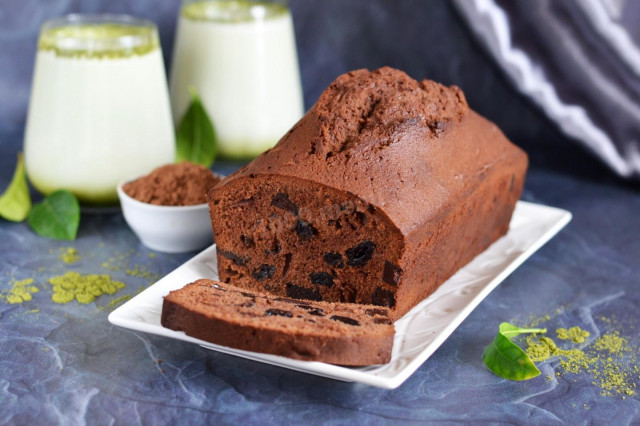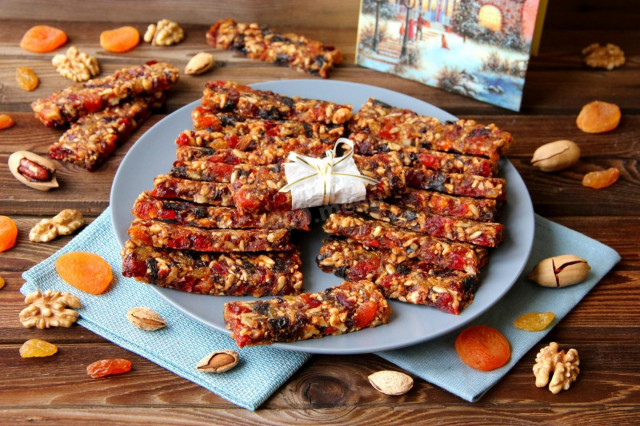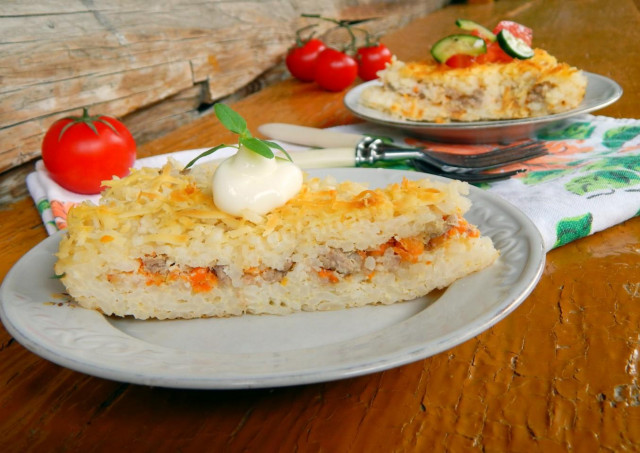Composition / ingredients
Step-by-step cooking
Step 1:

How to make thin honey cakes? Prepare the products. Wash the chicken eggs well and dry them. Take a dough bowl, beat the eggs into it and pour out the sugar.
Step 2:

Beat eggs with sugar until fluffy light mass and increase to double the volume. You can use a conventional whisk or use a mixer.
Step 3:
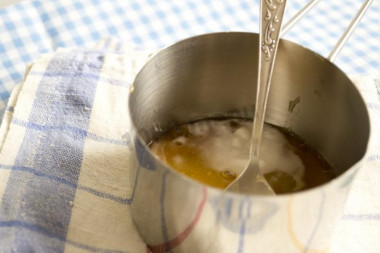
Put honey and soda in a heat-resistant small saucepan. If the honey is very thick, add a couple of tablespoons of water.
Step 4:
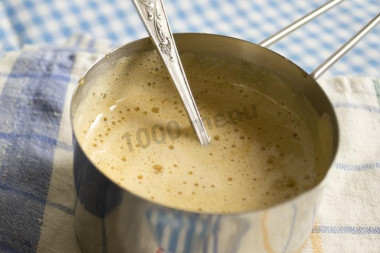
Put the saucepan on a small fire and, stirring constantly, warm up the mass — to foam and a light caramel smell. Do not leave it unattended — it will burn and run away.
Step 5:
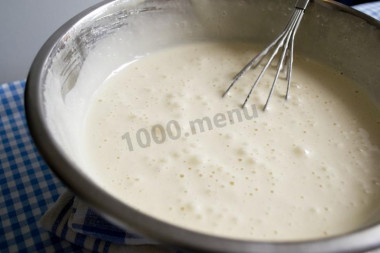
With constant stirring, pour the foamy honey in a thin trickle into the egg mixture, whisk it a little more, until a confident foam, like a good biscuit.
Step 6:
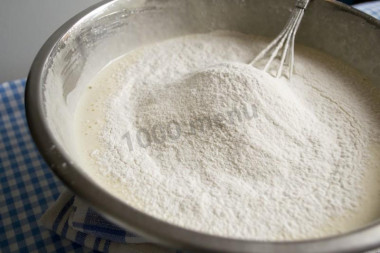
Sift a glass of flour into a bowl with egg mass.
Step 7:
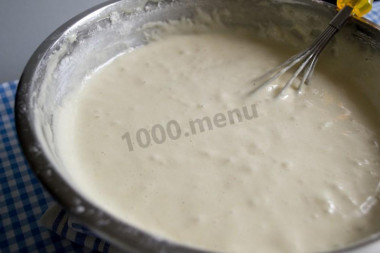
Gently stir. This dough is for the thinnest cakes with a thickness of 1-1.5 mm in the end. Pour it into the mold with a spoon, tap the mold a little on the table to distribute the dough more evenly, and bake for 1.5-2 minutes at 170 degrees. On a warm form, the dough spreads better than on a cold one. What to lubricate is an experiment. Somewhere it is better not to lubricate, for some forms butter goes perfectly, and for some - only a fur coat made of butter and flour.
Step 8:
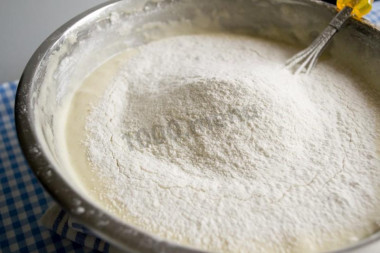
I'm moving on. I sift a second cup of flour into a bowl.
Step 9:
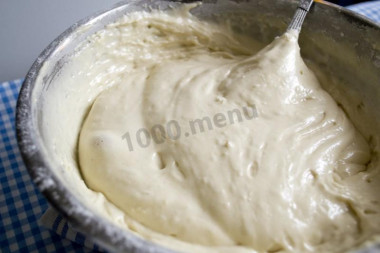
Stir. Neat and no frills. This is a dough for cakes with a thickness of 2.5-3.5 mm. As for me, the most ideal for a honey cake.
Step 10:
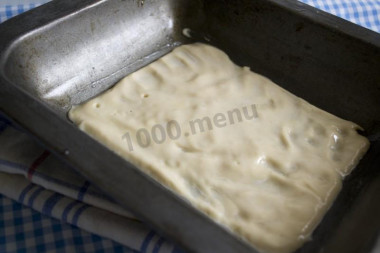
Grease the mold and spoon out the dough.
Step 11:
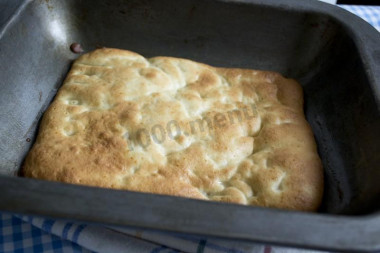
Bake the cake at 170 degrees for 3-3.5 minutes.
Step 12:
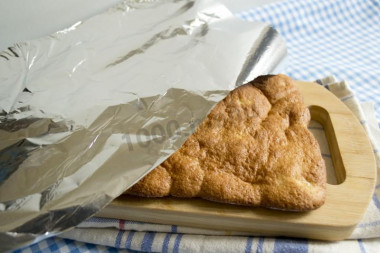
Cover the hot cake with foil and put it under the press. With such cakes, the cake will turn out smooth, without slides and distortions.
Step 13:
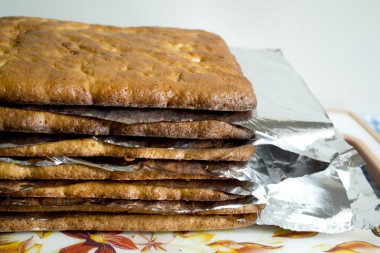
Thus, prepare all the cakes, folding one on top of the other and leaving under the press. Let them cool and stand. At least 1-2 hours, and best of all — night. The volume of these ingredients is enough for 7-8 cakes of a small rectangular cake 12 by 18 cm .
For a full-fledged festive cake, double all the ingredients.
For the thinnest cakes for 1 cup of flour and a large cake, multiply the volume of ingredients by three.
There are two more options.
1. Take 3.2 cups of flour and get standard thick cakes.
2. Do not take soda, take 4 cups of flour and roll out thin cakes (like ginger and Napoleon with a rolling pin).
Cook with love!
Bon appetit!
Not advertising, but I'm delighted with this recipe! By adjusting the amount of flour in it, we can get cakes of any thickness that we like, without loss of taste.
Be sure to wash the eggs before use, since even the seemingly clean shell may contain harmful bacteria. It is best to use food detergents and a brush.
Is it possible to replace baking powder with soda, how to add them correctly so that the baking is lush, how to avoid an unpleasant soda taste and much more, read the article "Baking powder or baking soda - which is better?"
Keep in mind that everyone's ovens are different. The temperature and cooking time may differ from those specified in the recipe. To make any baked dish successful, use useful information about the features of ovens !
Caloric content of the products possible in the composition of the dish
- Chicken egg - 157 kcal/100g
- Egg white - 45 kcal/100g
- Egg powder - 542 kcal/100g
- Egg yolk - 352 kcal/100g
- Ostrich egg - 118 kcal/100g
- Honey - 400 kcal/100g
- Granulated sugar - 398 kcal/100g
- Sugar - 398 kcal/100g
- Wheat flour - 325 kcal/100g
- Baking soda - 0 kcal/100g


